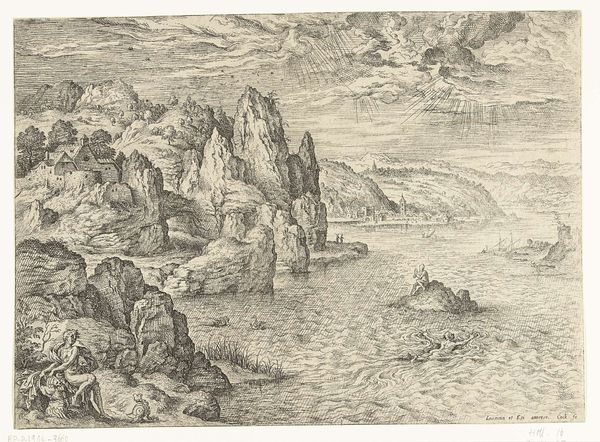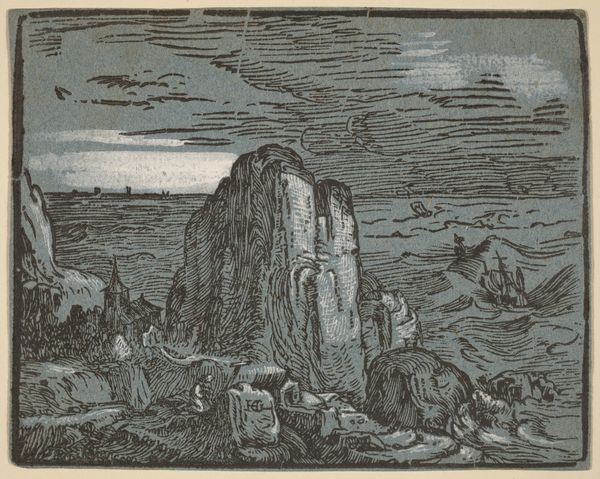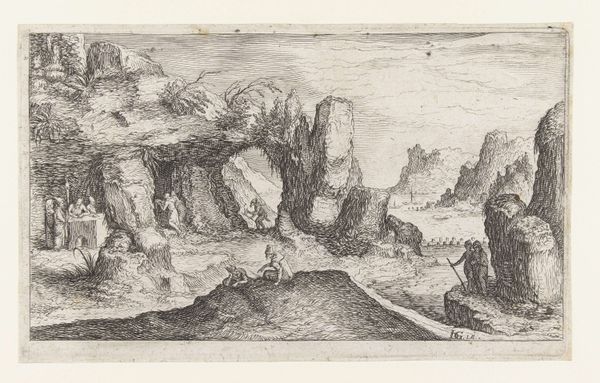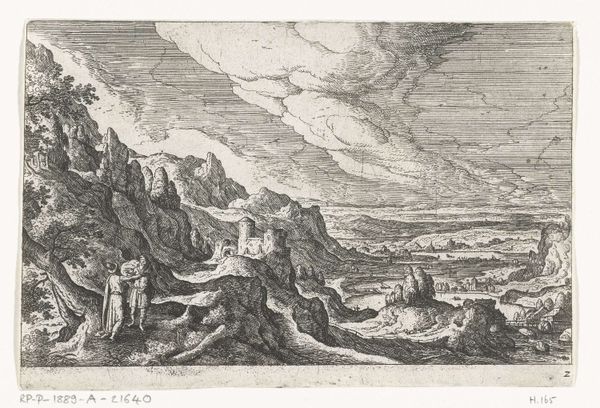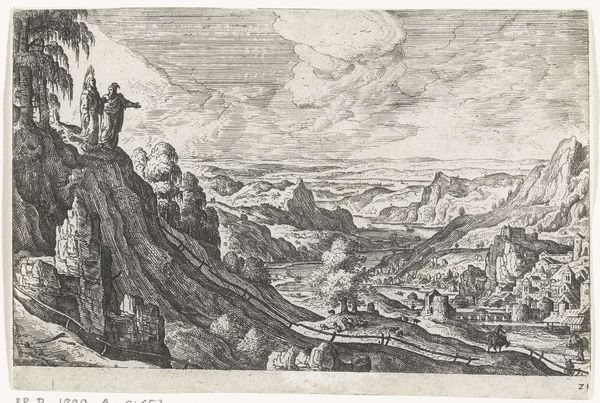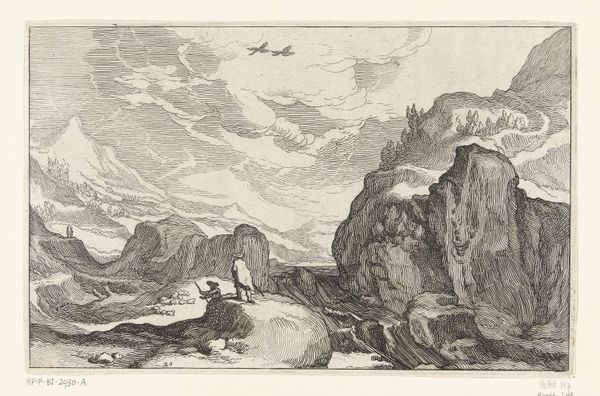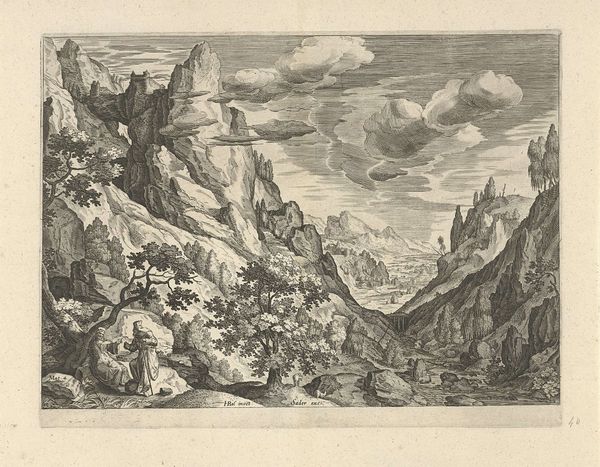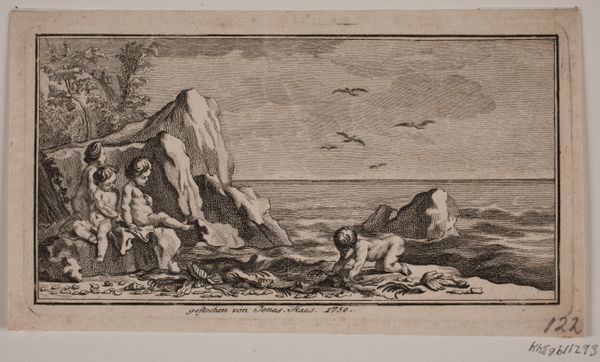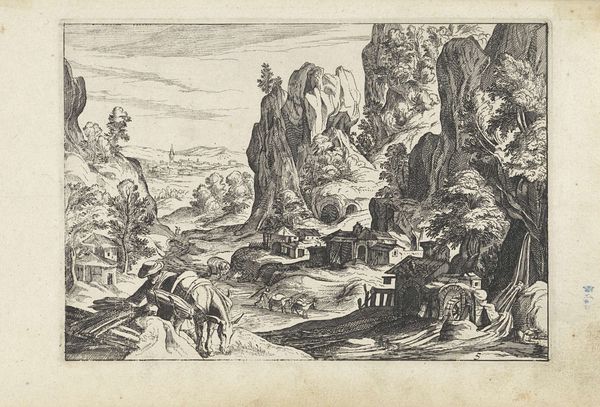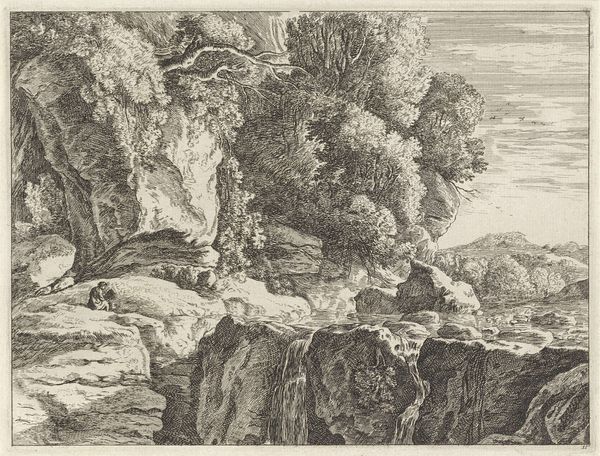
print, engraving
#
baroque
# print
#
landscape
#
etching
#
engraving
Dimensions: height 114 mm, width 145 mm
Copyright: Rijks Museum: Open Domain
Hendrick Goltzius rendered this coastline scene with pen and black ink. Dominating the composition are the rocks, which have been a constant motif in art history, representing both refuge and peril. Consider, for instance, how the motif of the rock appears in ancient myths, such as the rock given to Cronus, or the rock in the myth of Prometheus. This symbol, charged with both promise and danger, appears again and again. In medieval allegories, the church is often depicted as a rock, a safe harbor in a sea of doubt, yet the same rock can sink a ship. It is through the memory of such associations that we can appreciate the psychological depth of Goltzius's scene. The rough, formidable rocks evoke a sense of awe and primal fear, engaging our subconscious awareness of nature's indifference and the precariousness of human existence. The sea, ever churning, the rocks, always present: the cyclical nature of life and the persistence of symbols across time.
Comments
No comments
Be the first to comment and join the conversation on the ultimate creative platform.
